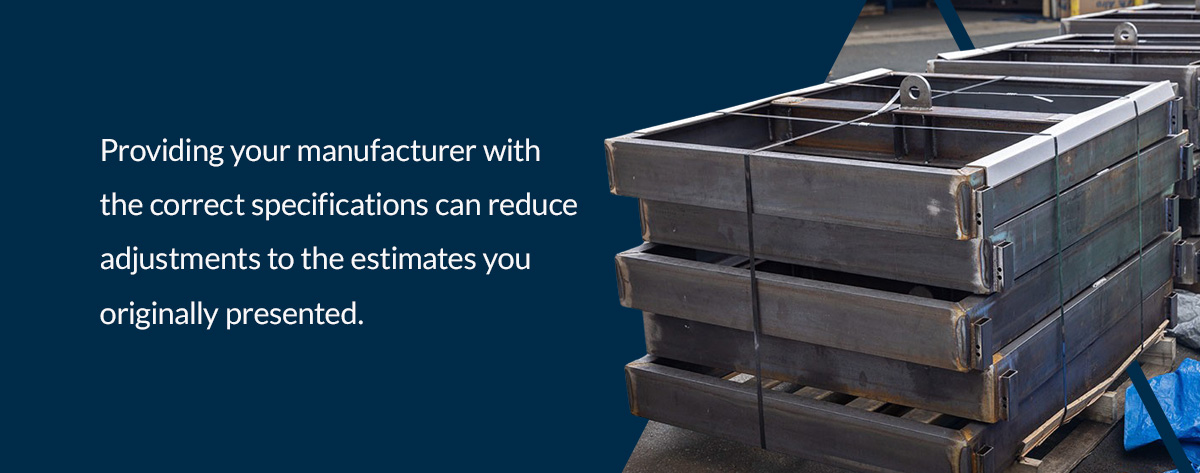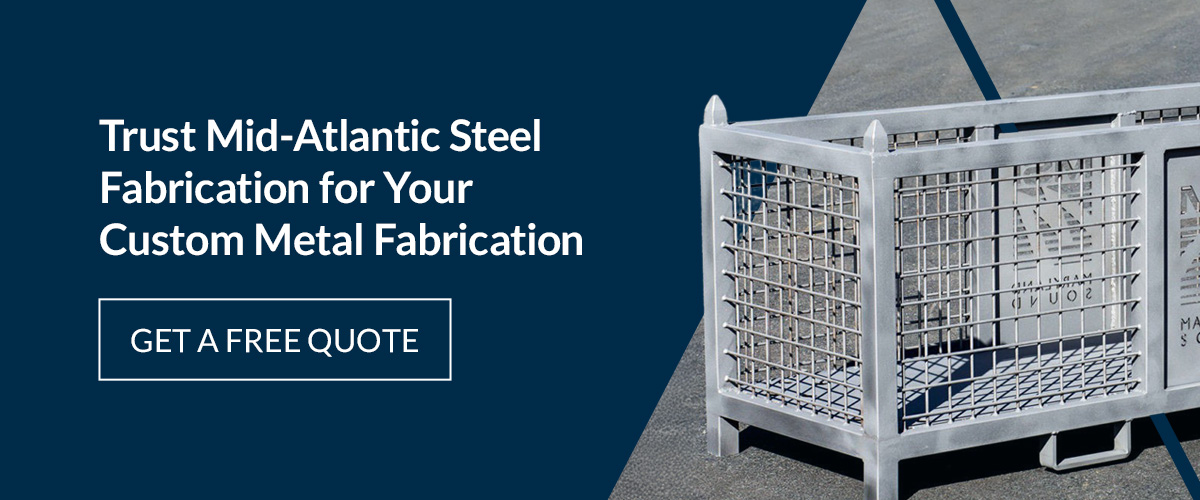It’s no secret that sheet metal is one of the most valuable manufacturing and construction materials. It’s used to create various parts for different applications — and, therefore, can vary in cost. If you’re interested in sheet metal fabrication services, you’re likely curious about how much you can expect to pay for your project.
What processes are involved in sheet metal fabrication? How do raw materials and finishing selections increase or reduce costs? Learn more about important cost variables and estimating sheet metal fabrication costs below.
5 Factors That Influence the Cost of Sheet Metal Fabrication
Before you start calculating project costs, it’s best to know which variables affect metal fabrication prices. Here are five top factors to consider:
1. Raw Materials
The materials used in fabrication impact pricing, and you may work with stainless steel, carbon steel, aluminum, or other metals. While prices fluctuate, some metals are generally more expensive than others. The size and thickness of each metal will also impact costs.
Keep in mind that despite their costs, certain metals will be more suited for specific functions. For instance, steel works great for construction materials, while magnesium is frequently used for machinery parts. Often, the cheapest raw material isn’t the best raw material for your needs — mitigating costs is important, but you will want to consider quality and your product overall, as well.
2. Design
The cost of sheet metal fabrication also depends on product design. This aspect will affect the type of work, machinery, and amount of materials you use. Simple designs are generally less expensive because you will need less welding, bending, and cutting. More complex and intricate designs typically require longer fabrication times and more labor, making the product more expensive.
3. Machinery
Depending on your project, you may require more sophisticated machinery. In some cases, you may need multiple kinds of fabrication machines and techniques to complete the work. If you’re planning a more elaborate, detailed project, you’ll likely need to expand your budget to leave room for any additional machining required.
4. Labor
Sheet metal fabrication requires physical work. When you work with a sheet metal fabricator, you’re not just paying for the end product — you are paying for their skilled, experienced team to create it. As a result, labor is included in the overall cost of sheet metal fabrication. In cases where you may need repeatable, tight-tolerance parts, you may pay more in labor costs due to the need for multiple quality control engineers.
5. Volume
How much product do you need? Another key aspect of costs is product quantity — ordering larger volumes of products may lead to discounts, since materials may be cheaper in bulk, but smaller, one-time projects can also be cost-effective. Speak with your metal fabrication service provider to learn more about how volume can impact costs.
Estimation Cost to Fabricate Sheet Metal
Across the manufacturing industry, most businesses can expect to pay around three times the cost of sheet metal for fabrication services. If you want to break down the project’s overall costs into sections, consider your project’s scope, as well as the following:
- Raw materials cost
- Design cost
- Machining cost
- Overhead cost
Every project’s cost will differ, and you may even pay different prices across projects based on what you’re creating. For full transparency, it’s best to consult with a professional steel fabricator about your exact project requirements.
How to Lower the Cost of Custom Metal Fabrication
Altogether, sheet metal fabrication is a low-cost method compared to other techniques. That said, if you’re looking for ways to lower sheet metal fabrication costs while maintaining quality, consider a few ideas:
Work With Simpler Designs
Simple designs are easier to produce and replicate, which can be beneficial if you’re working on large-scale projects. If possible, work with simpler angles and more consistent bends. This approach helps you lessen the cost of the time spent on fabrication. Try to be flexible with your designs, choosing a strategy that results in a functional product without too much time dedicated to adding overly complex details.
Use Standard-Sized and Appropriate Materials

Using standard metal sizes can help you cut back on costs — longer- and thicker-than-average materials will be pricier. These materials will also require more labor and fabrication time. Additionally, consider using less expensive materials when prototyping. Because you can expect revisions at this stage, using pricey materials for every revision can compound the total production cost.
Accurate product specifications can also help you reduce costly mistakes. Providing your manufacturer with the correct specifications can reduce adjustments to the estimates you originally presented. This step helps manage expectations and expenses.
Choose Affordable Finishes
Similar to material sizes, you’ll find there are various standard and specialized finishes for metal fabrication projects. For instance, powder coating and metal plating can be more affordable, as they’re more standard finishes. If you don’t need any finishing, a raw or rough finish skips the step entirely, further reducing costs. These are some of the most common sheet metal finishes:
- Abrasive blasting
- Anodizing
- Bead blasting
- Buff polishing
- Electroplating
- Electropolishing
- Painting
- Phosphate coating
- Powder coating
- Raw finish
While you’ll want to choose a finish that suits your product’s type and environment, you should also consider alternatives that may help you maximize your budget at the same time. Consider your manufacturer’s offerings and what they recommend to consider all your options.
Plan Carefully
When working through a metal fabrication project, smaller fees can quickly add up — whether last-minute design changes or shipping costs. Be sure to plan your project carefully, working with your manufacturer to determine the best approach. It’s also helpful to start your project sooner rather than later. This way, your fabrication partner can have more time to source affordable materials.
Trust Mid-Atlantic Steel Fabrication for Your Custom Metal Fabrication
Mid-Atlantic Steel Fabrication is a superior manufacturer in sheet metal fabrication. We offer you a one-stop shop for laser cutting, CNC forming, welding services, and more in the Mid-Atlantic region. As a team with extensive industry experience, you can count on us to help transform your plans from paper to actual products — our custom steel fabricators are D1.1 structurally certified.
When you work with us, you get access to a dedicated project manager, ensuring smoother communication and a more streamlined fabrication process. Whether you’re an architect working on a residential project or a construction manager overseeing building work, we’ll work with you to design and produce quality products within your budget. Request a quote today to get started.

